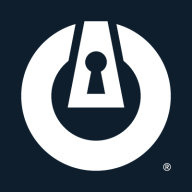

Cisco Identity Services Engine (ISE) and ThreatLocker Zero Trust Endpoint Protection Platform compete in network security. Cisco ISE holds an advantage in integration within Cisco environments, while ThreatLocker has an upper hand with its zero-trust focus and ease of deployment.
Features: Cisco Identity Services Engine supports comprehensive 802.1X integration, posture assessment, and seamless compatibility with various Cisco products, providing a robust experience for Cisco environments. ThreatLocker emphasizes a zero-trust security model with application control, threat prevention, and allowlisting to ensure rapid application approvals.
Room for Improvement: Cisco Identity Services Engine could address its complexity and steep learning curve, alongside improving its upgrade and non-Cisco integration processes. ThreatLocker could enhance its training offerings, offer more granular administrative controls, and improve its ability to process updates efficiently across large networks.
Ease of Deployment and Customer Service: While Cisco Identity Services Engine benefits from support programs, its setup is intricate and support is sometimes slow. ThreatLocker offers smoother deployment across environments and could improve through expanded support hours and increased training flexibility.
Pricing and ROI: Cisco Identity Services Engine is often considered expensive with a complex licensing structure. However, its extensive feature suite offers value for larger Cisco-centric organizations. ThreatLocker provides cost-effective zero-trust solutions with competitive and flexible pricing, offering a valuable ROI by enhancing threat prevention and operational efficiency.
Direct comparisons with Forescout reveal up to 30% to 40% difference in cost savings.
If something were to happen without ThreatLocker, the cost would be huge, and thus, having it is definitely worth it.
The main return on investment is peace of mind, knowing that with ThreatLocker on any endpoint, it will almost always block all malicious code or exploits, even zero-day exploits.
It keeps malware, Trojans, and ransomware at bay.
I rate the technical support as one out of ten.
Cisco support has pretty good teams for support and every time we had good answers and we could somehow solve the issues we had.
Sometimes it's challenging to identify which support team is responsible for certain issues, which is a significant concern.
They have been very responsive, helpful, and knowledgeable.
I would rate their customer support a ten out of ten.
Their support is world-class.
Factors like architecture, business nature, and legal limitations such as GDPR affect it.
However, you can have some latency issues depending on where your devices are.
I started off with just the servers, and within a month and a half, I set up the entire company with ThreatLocker.
It seems to primarily operate on the endpoints rather than at a central location pushing out policies.
I would rate it a ten out of ten for scalability.
Cisco Identity Services Engine (ISE) is considered very reliable and stable.
The stability of Cisco Identity Services Engine (ISE) is poor for certain use cases, like authentication.
Sometimes when we have upgrades or failovers with Cisco Identity Services Engine (ISE), we had some minor issues.
For five years, we have not had a problem.
Once deployed, it downloads the policies locally, so even if the computer doesn't have internet, it doesn't matter.
It has been very stable, reliable, and accessible.
The whole setup works well with Cisco access points and Cisco switches, but when you have multiple vendors in the environment, such as HP switches or access points like Aruba, you'll find they will not work well with Cisco Identity Services Engine (ISE).
Pricing can be more expensive compared to other vendors, and there is a significant price gap observed, which doesn't seem justified by some specific features.
They are very poor in asset classification and should focus on improving the preauthentication profiling, especially for NAC use cases.
Controlling the cloud environment, not just endpoints, is crucial.
This is problematic when immediate attention is needed.
Comprehensive 24-hour log monitoring is a valuable enhancement for both business and enterprise-level users.
Compared to other solutions like HPE ClearPass, Cisco is more costly, and the conversation suggests a possible forty percent price gap compared to competitors.
The license costs can range between $50,000 to $100,000 per year for enterprises.
Cloud solutions are expensive, while on-prem setups with shared environments are cheaper but not effective.
After conversations with other partners, it became clear we underpriced it initially, which caused most of our issues.
We are moving towards the Unified solution, where they basically bundle everything together, providing us better stability with the ability to bring in new product offerings without having to go back to the customer and say, 'This is going to cost you.'
I had a really good deal at the time, and it continues to be cost-effective.
Cisco Identity Services Engine (ISE) offers authentication using RADIUS, enhancing network security by separating and segregating networks.
There is value because it helps us secure the network and prevents certain things from happening which could cause financial loss.
The adaptability of Cisco Identity Services Engine (ISE) policy enforcement can fit to the site we have depending on which kind of devices we have on site and then the needs for authentication, granting access and then assigning each device into its correct network for segmentation.
ThreatLocker Zero Trust Endpoint Protection Platform's ability to block access to unauthorized applications has been excellent.
It protects our customers.
The major benefit is fewer breaches overall, as nothing can be run without prior approval. This helps my company protect its data and secure itself effectively.
| Product | Market Share (%) |
|---|---|
| Cisco Identity Services Engine (ISE) | 24.2% |
| ThreatLocker Zero Trust Endpoint Protection Platform | 0.5% |
| Other | 75.3% |


| Company Size | Count |
|---|---|
| Small Business | 44 |
| Midsize Enterprise | 31 |
| Large Enterprise | 91 |
| Company Size | Count |
|---|---|
| Small Business | 32 |
| Midsize Enterprise | 4 |
| Large Enterprise | 3 |
Cisco Identity Services Engine (ISE) offers comprehensive network access control and visibility, supporting features like 802.1X authentication, profiling, and posturing. It integrates with Microsoft and other Cisco products, facilitating robust security policies across distributed networks.
Cisco Identity Services Engine is a key player in network access control, offering centralized management and a user-friendly interface. It supports zero trust principles and provides strong authentication for wired and wireless networks. ISE's capabilities include granular security policies, enhanced device posturing, and seamless integration, bolstering security infrastructure. Users benefit from its dual authentication through EAP, simplifying access management across networks.
What are the key features of Cisco ISE?In industries like finance, healthcare, and education, Cisco ISE is pivotal for securing wired and wireless networks, implementing BYOD policies, and managing user access. Organizations leverage ISE for effective authentication and authorization, while maintaining compliance with industry security standards.
ThreatLocker Zero Trust Endpoint Protection Platform offers robust endpoint security through application control and allowlisting, safeguarding servers and workstations from unauthorized software execution.
ThreatLocker Zero Trust Endpoint Protection Platform provides extensive application control with features like ring-fencing and selective elevation, ensuring meticulous execution management. Offering learning mode and extensive support, it integrates threat detection and activity monitoring to enhance compliance, reduce costs, and bolster cybersecurity through alerts and approvals. Despite its strengths, there are areas for improvement in training flexibility, policy updates, and interface enhancements, along with challenges in handling non-digitally signed software. Deployed across environments, it works well with existing cybersecurity instruments for real-time threat prevention.
What are the top features of ThreatLocker?ThreatLocker Zero Trust Endpoint Protection Platform is widely implemented to safeguard IT infrastructures against unauthorized access and application use. In sectors where data security is paramount, this platform enables users to prevent unauthorized software installations and control device applications, ensuring real-time threat prevention and compliance with industry regulations.
We monitor all Network Access Control (NAC) reviews to prevent fraudulent reviews and keep review quality high. We do not post reviews by company employees or direct competitors. We validate each review for authenticity via cross-reference with LinkedIn, and personal follow-up with the reviewer when necessary.